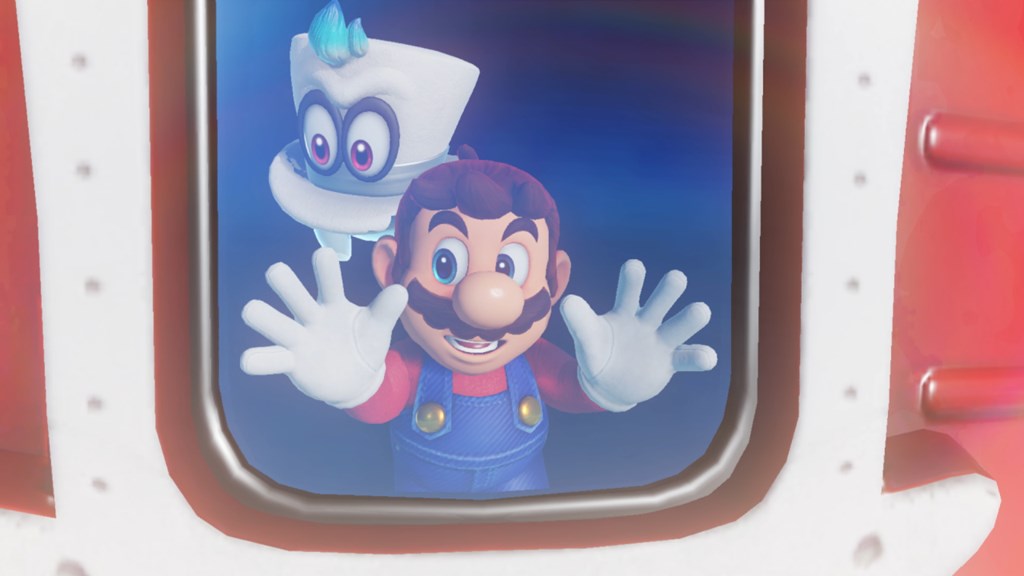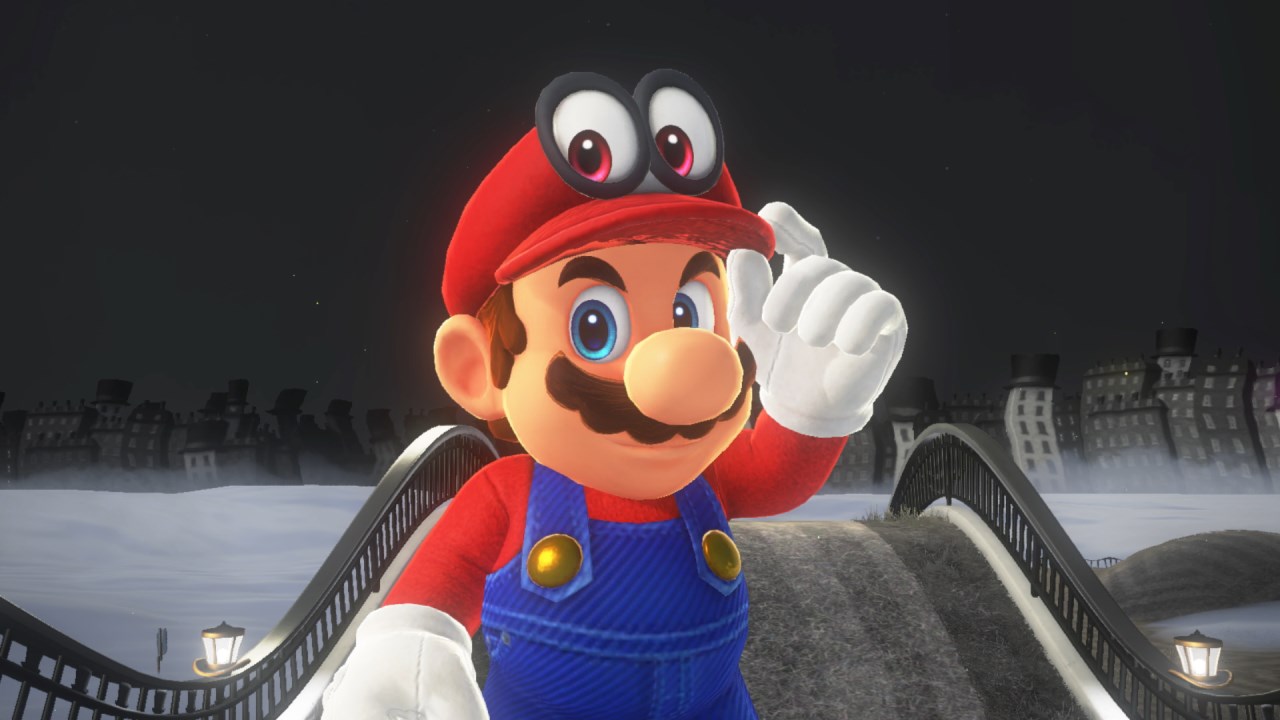
I think younger players are going to be confused and perhaps even shocked by Super Mario Odyssey.
Sure, DNA from some of the Mario series’ more recent 3D entries, like the critically acclaimed Wii Galaxy titles, is present in the former plumber’s latest outing, but the most comparable examples are 1996’s industry defining Super Mario 64 and even Super Mario Sunshine — one of the series’ most divisive entries that had Mario wielding a strange water gun backpack.
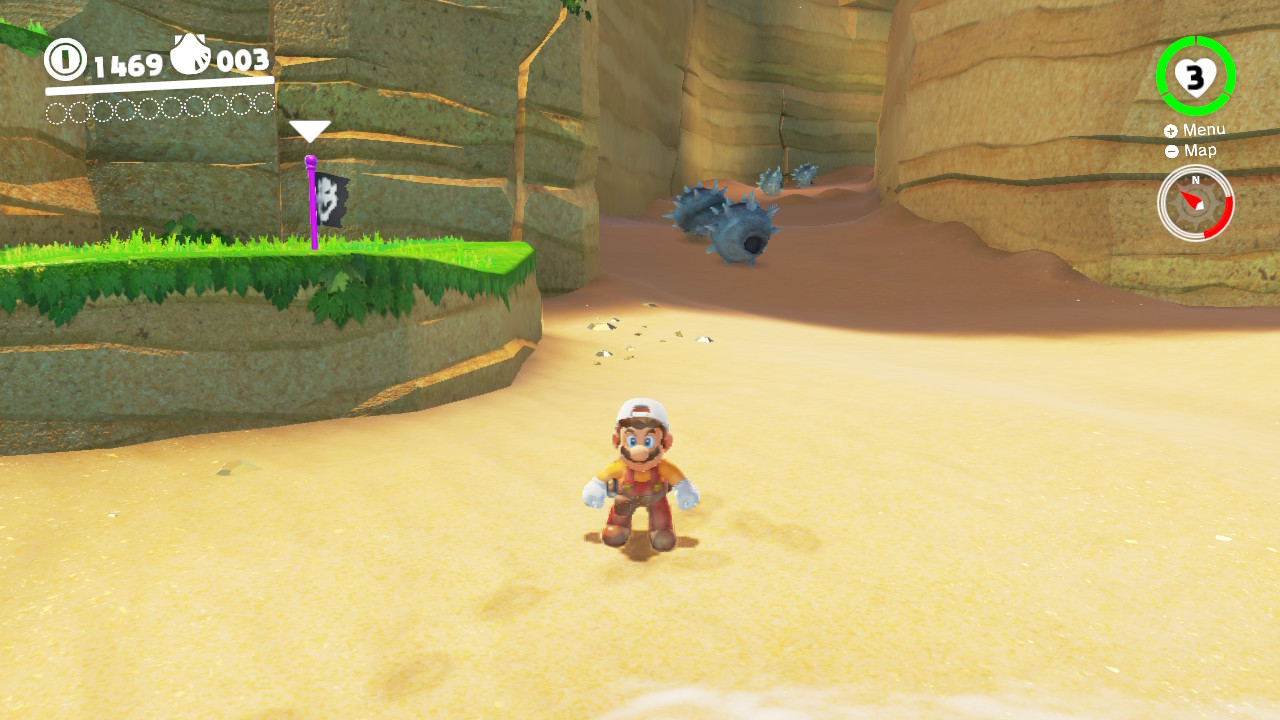
Super Mario Odyssey is a throwback to fondly remembered Nintendo 64 titles like Banjo Kazooie and Donkey Kong 64, evoking an era when 3D gaming felt new, fresh and was focused on collecting various items.
It’s not to say that Odyssey is just a retread of more than a decade old ideas repurposed for the Nintendo Switch — because it isn’t. Just those who are familiar with Mario’s more recent platforming outings — the New Super Mario Bros. series and even Super Mario 3D World on the Wii U, for example — may find the return to Nintendo’s mid to late 90’s to early 2000s collecting adventure heyday, a little off-putting.
Possessing your foes (yes, seriously)
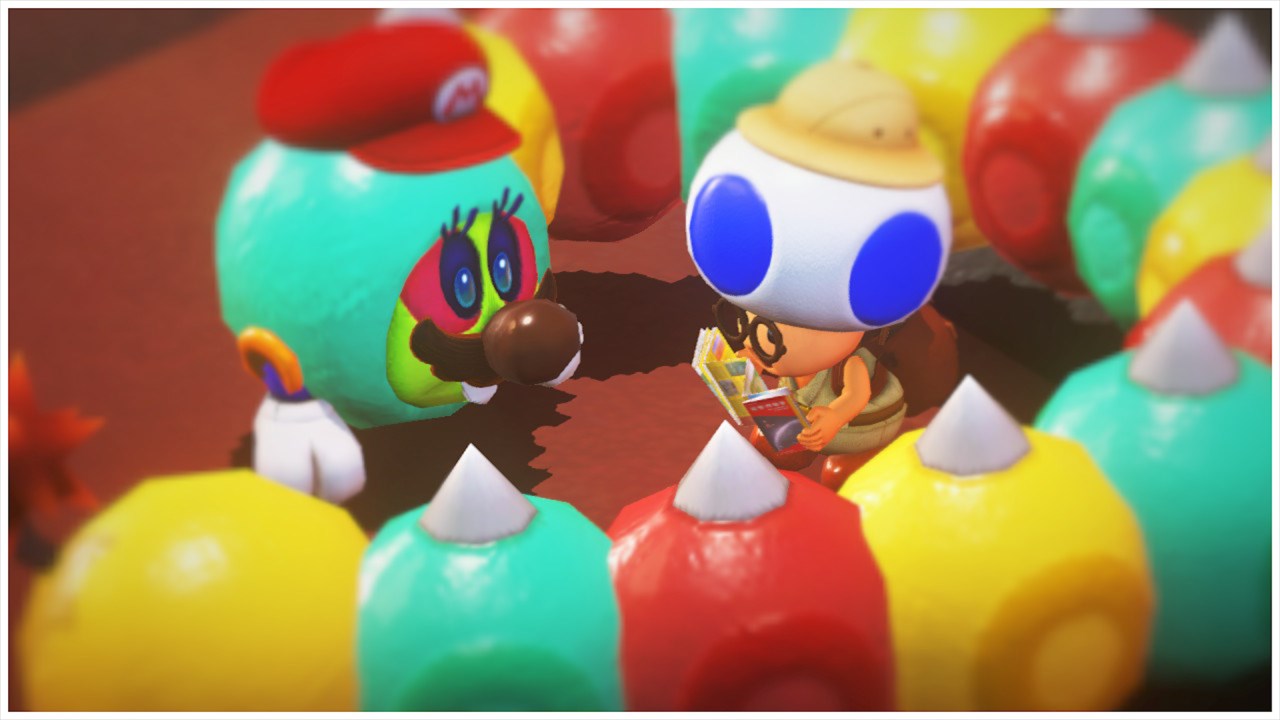
Regardless of how Nintendo positions Mario’s ability to take over his foes and gain their abilities, the process feels strange on a purely existential level.
For the first time, Mario’s coolest abilities are attained when, well, you aren’t really Mario anymore.
In Odyssey, Mario has the ability to take over a variety of baddies like Bullet Bills, Goombas and even Tanks, thanks to Cappy, his talking hat companion that’s tagging along for this adventure.
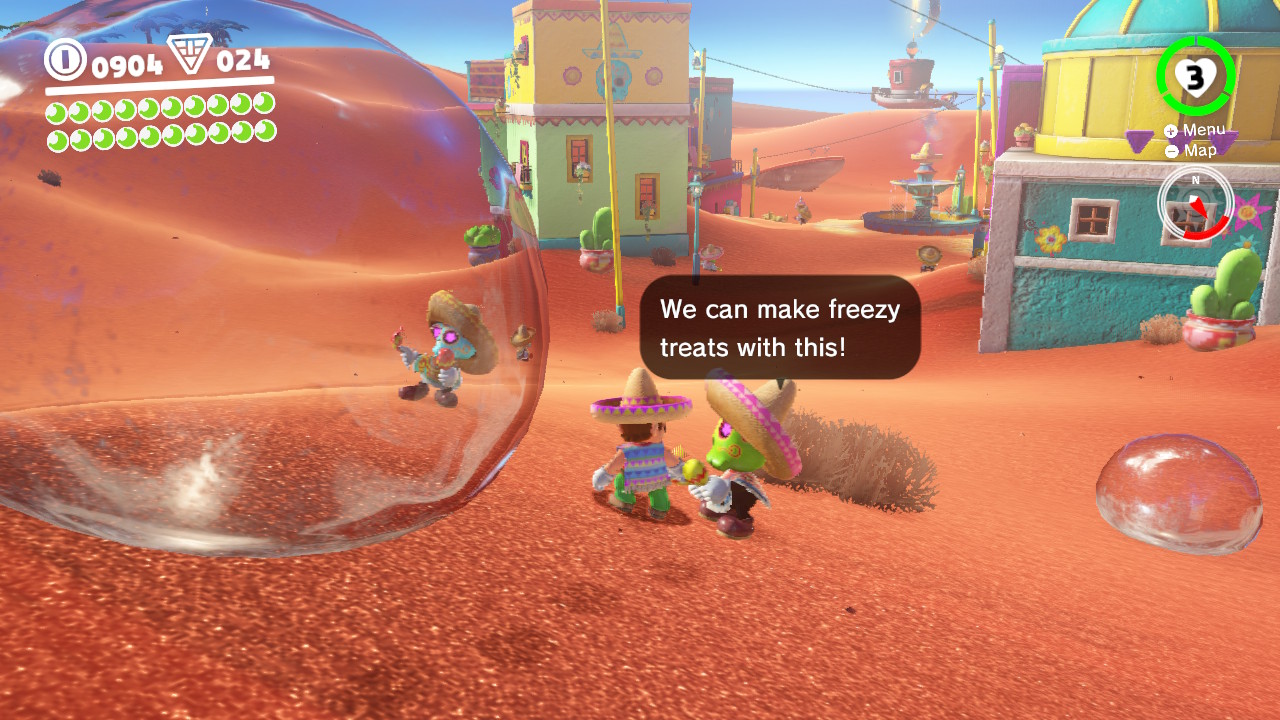
To be clear, Nintendo calls this feature ‘capturing’ and even includes a Pokémon-style list that’s accessible through the game’s menu, allowing the player to check off each creature they embody.
The game’s story itself has a bizarre premise: Mario is trying to stop Bowser from marrying Princess Peach, with the player fighting King Koopa’s evil bunny rabbit wedding planners called Broodals. Why is Bowser suddenly intent on marrying Peach and not just capturing her? I’m not quite sure either, but story has never been the main draw of the Mario series — the damsel in distress narrative is tired at this point, though.
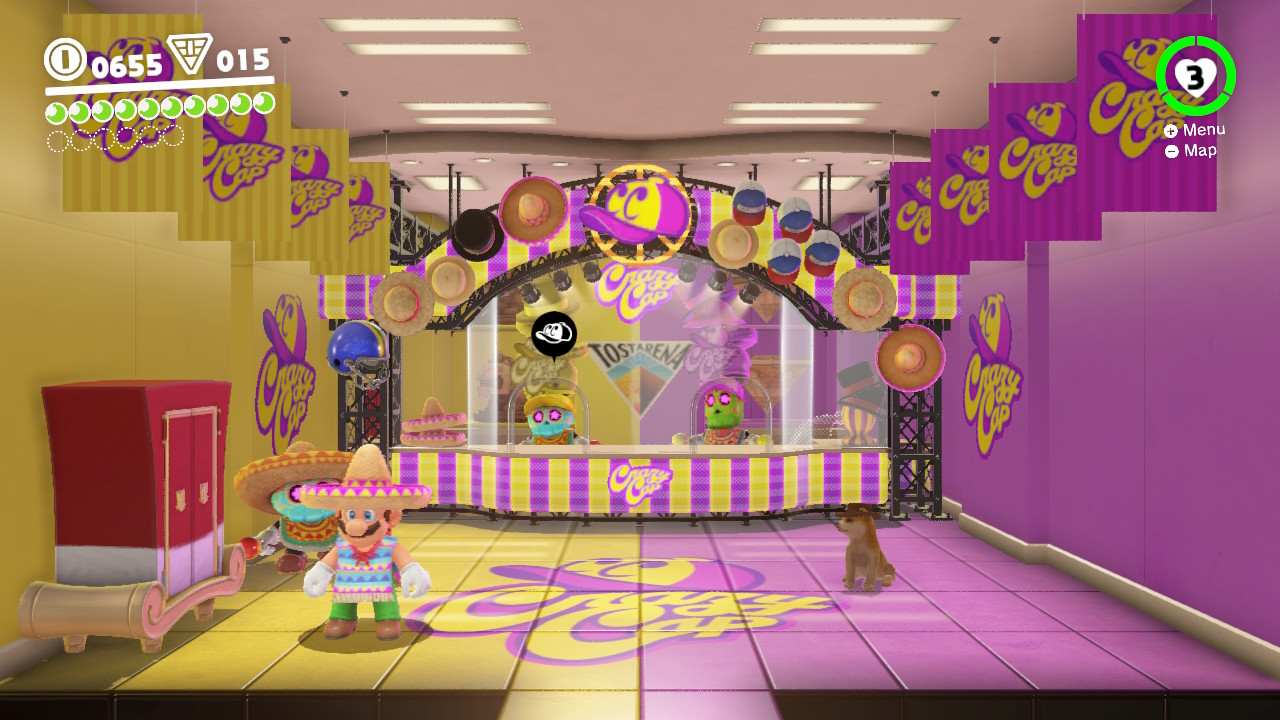
Somewhere between exploring the heights of New Donk City’s skyscrapers, becoming a T-Rex (yes, that’s right), wearing a poncho/sombrero and finally, making Mario wear a wedding dress, I came to the realization that this is a very different kind of Mario game in some respects.
While I found the changes to Mario’s typical formula strange at times, it’s hard not to admire the chances Nintendo is taking with Odyssey by fundamentally shaking up what fans have grown to expect from the series for years.
Much of the game’s fun involves taking over foes, so I’ll refrain from going into detail, but rest assured, beyond the aforementioned prehistoric creature, there are other interesting and surprising souls to steal in Super Mario Odyssey’s various intricately designed and surprisingly alive Kingdoms.
Is Mario even human?
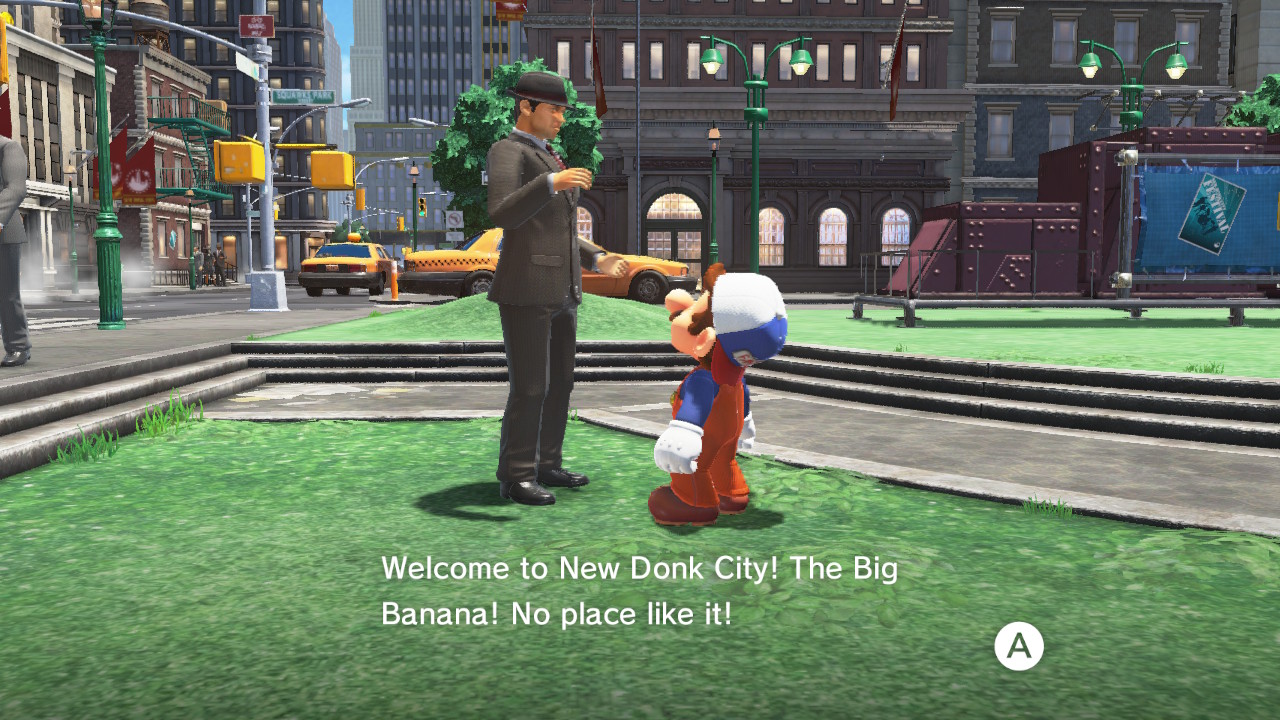
All joking aside, I’d say Nintendo takes things a little too far in some situations. For instance, New Donk City’s realistically rendered humans feel just as out of place as they did when Sega tried the same tactic with the Dreamcast’s Sonic Adventure back in 1998.
Still, there’s something fascinating about bounding across skyscrapers as cartoony Mario in a realistic environment.
Considering Super Mario 64 is one of my favourite Mario titles, I also appreciate the return to collecting items, which in Odyssey are called Power Moons.
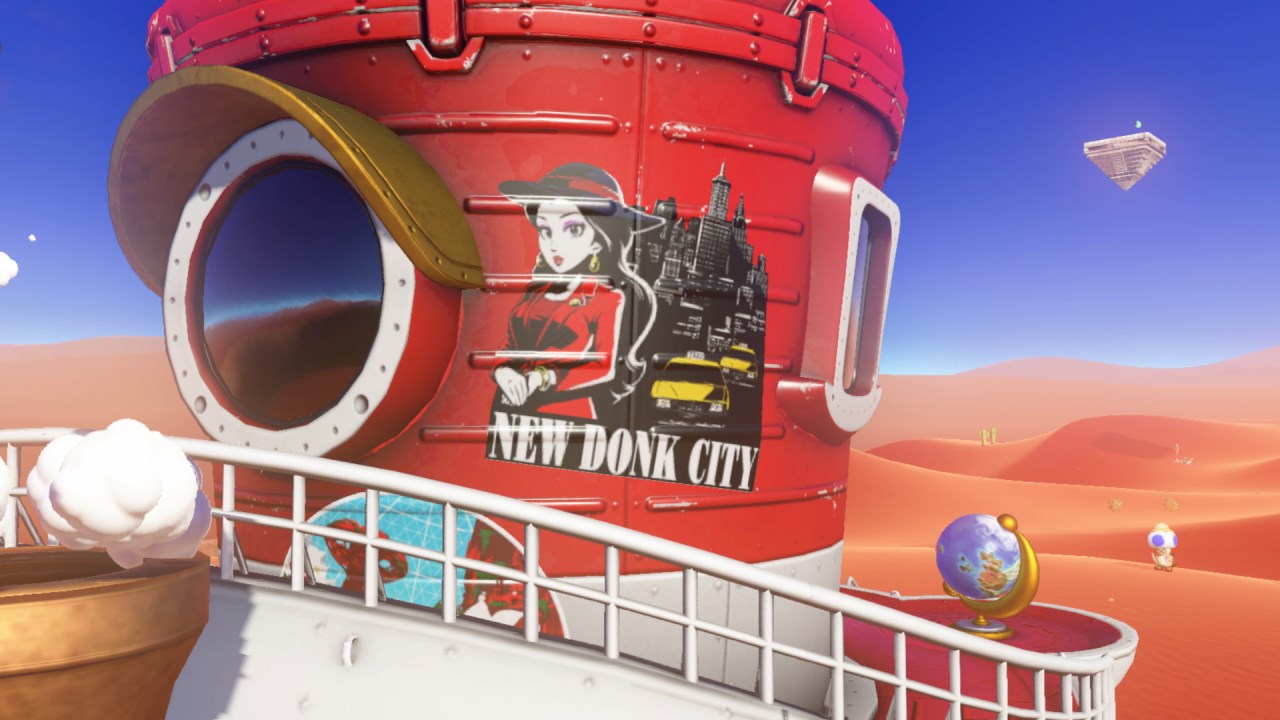
Tasks range from helping a resident of a specific world (there are some creative creatures in Odyssey), to performing more expected missions like climbing to the top of a structure or destroying specific obstacles.
There are also a lot of Power Moons in the game, so expect to be playing for some time if you’re a completionist — there are way more than the Stars and Shines present in previous titles. The game’s various stages are locked by specific moon amount requirements, which is a throwback to Mario 64‘s star quotas for accessing each level.
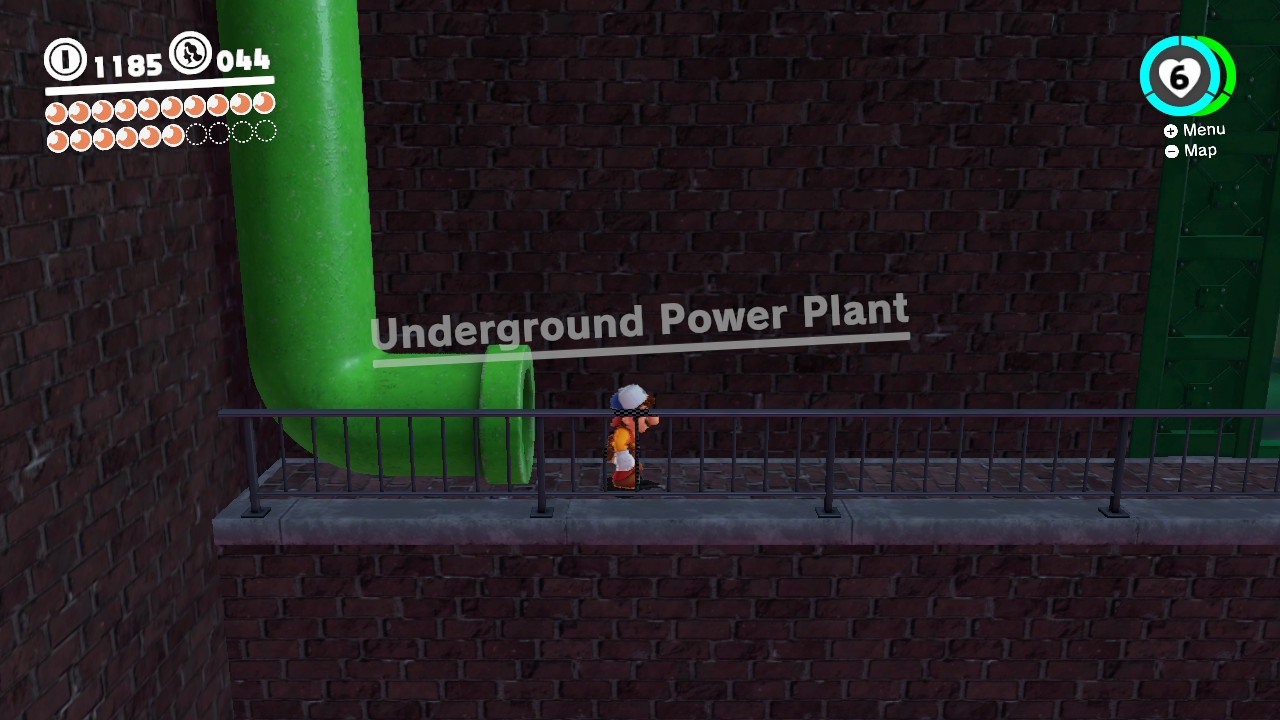
While I initially felt that perhaps the game was a little too easy after getting almost all of the available Moons in the title’s early stages, I quickly realized I was wrong. While some Moons may seem overly simple to grab, there are others that require solving puzzles so mind-bending that I didn’t expect to encounter them in a Mario title. It’s nice to see that Nintendo has ensured the game remains accessible, while still offering something worthwhile for the hardcore demographic.
Some even require extremely precise platforming and precision timing while running around as a wobbly tower of goombas.
Uneven worlds
In general, Kingdoms range from absolutely fascinating, to uninspired and boring. Again, without revealing too much, I found the Cap and the Cascade Kingdom lacklustre, while the Sand, Lake and Seaside Kingdoms were interesting, entertaining and featured some of the most clever level design I’ve ever encountered in a Mario title (there are plenty more Kingdoms to explore).
Visually, there is also some disparity present in Odyssey. While some Kingdoms look stunning, others have rampant anti-aliasing issues and in some cases, feature low-resolution textures in specific areas.
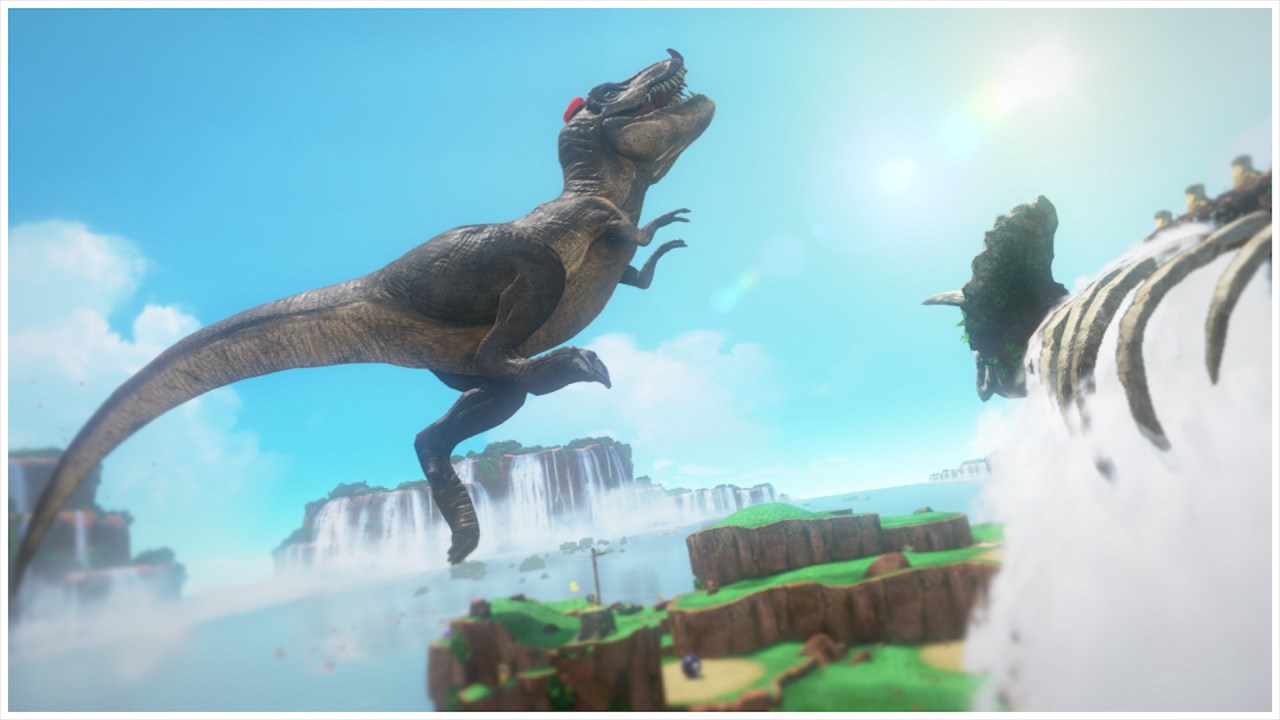
This is likely optimization on Nintendo’s part in order to get the game to run in 1920 x 1080 pixel (1080p) when docked. It’s true that in general Super Mario Odyssey looks better in docked mode and running on a television in full HD, when compared to the portable mode’s 1280 x 720 pixels (720p) resolution offering, though most players likely won’t notice the differences (check out Digital Foundry’s extensive analysis if you’re interested in learning more).
In certain areas of some stages, though — New Donk City instantly comes to mind — Odyssey can at times look downright ugly.
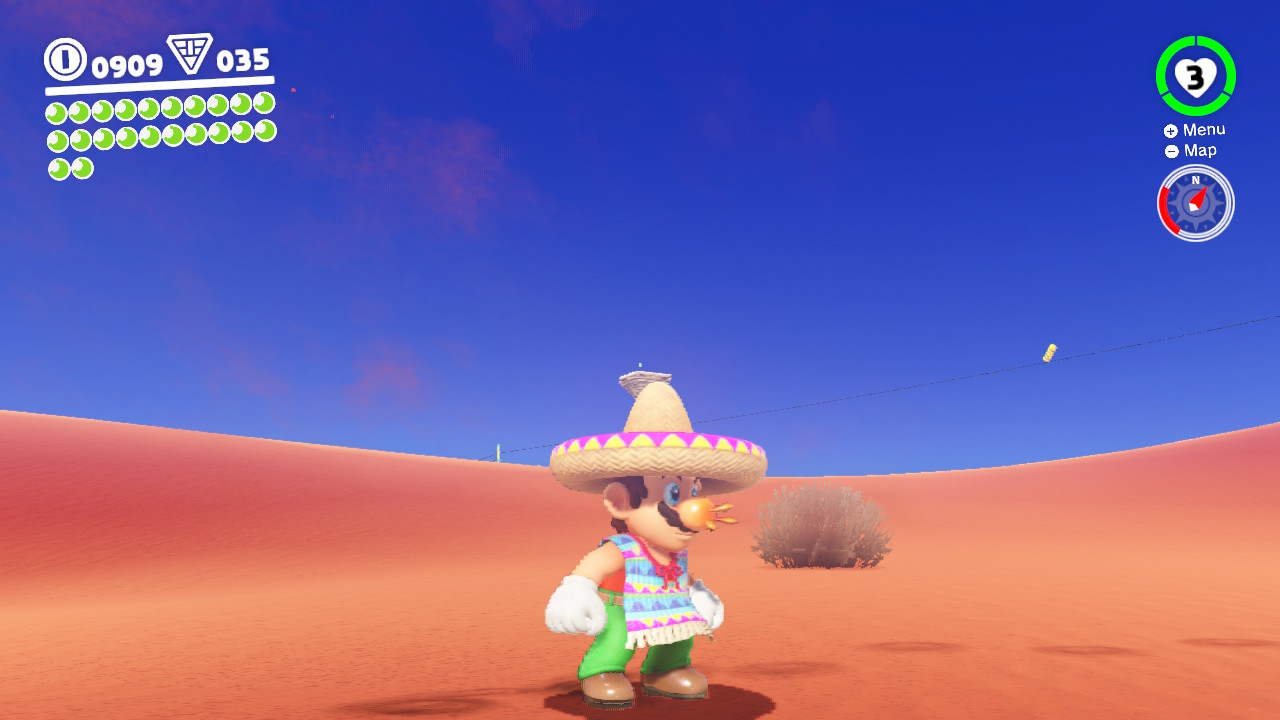
Still, this level of optimization is impressive and is an indication of the visual quality Nintendo’s tiny, but still formidable Switch is capable of producing, when a game has been built from the ground-up for the system and not ported from the Wii U or another console.
This really is the best a Mario game has ever looked. As a nice touch, small sections of each stage feature 2D side-scrolling elements that adopt the look and feel of classic NES era Mario platformers, complete with clever modern touches.
While moving through these sections of the game, which are often inserted during surprising areas and moments, it was difficult to wipe the smile off my face. Nintendo certainly has a knack for working its past into games and this is something that definitely appeals to my nostalgic side.
It’s worth noting that the game’s tagalong multiplayer mode, as well as the slight disparity between Joy-con motion controls and playing with a standard gamepad — you can sort of control the direction Capy is thrown by flicking — are also issues Odyssey suffers from.
The style Mario has been missing for years is back
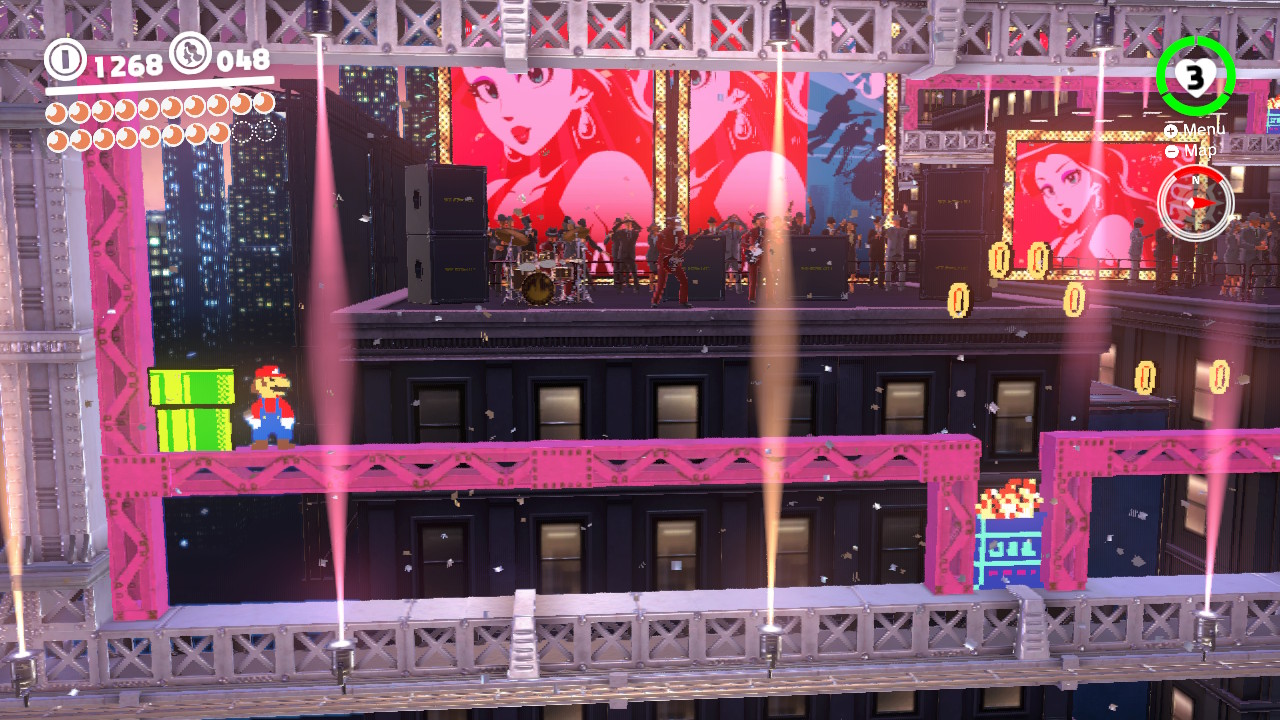
Super Mario Odyssey is bursting with ideas and things to do at such a level that my partner — who doesn’t have much experience with the series — actually asked if the title was taking inspiration from The Legend of Zelda Breath of the Wild.
While I initially scoffed at this statement, there is actually some truth to it. Though the game is disappointingly lacking a hub world of some sort linking its Kingdoms together — Super Mario 64’s castle was my favourite part of the classic game — Odyssey feels bigger, alive and, more iportantly, full of things to do, when compared to any previous Mario title.
For some, this likely isn’t what they want from a Mario game, especially those who enjoy the stout Italian’s more linear recent experiences.
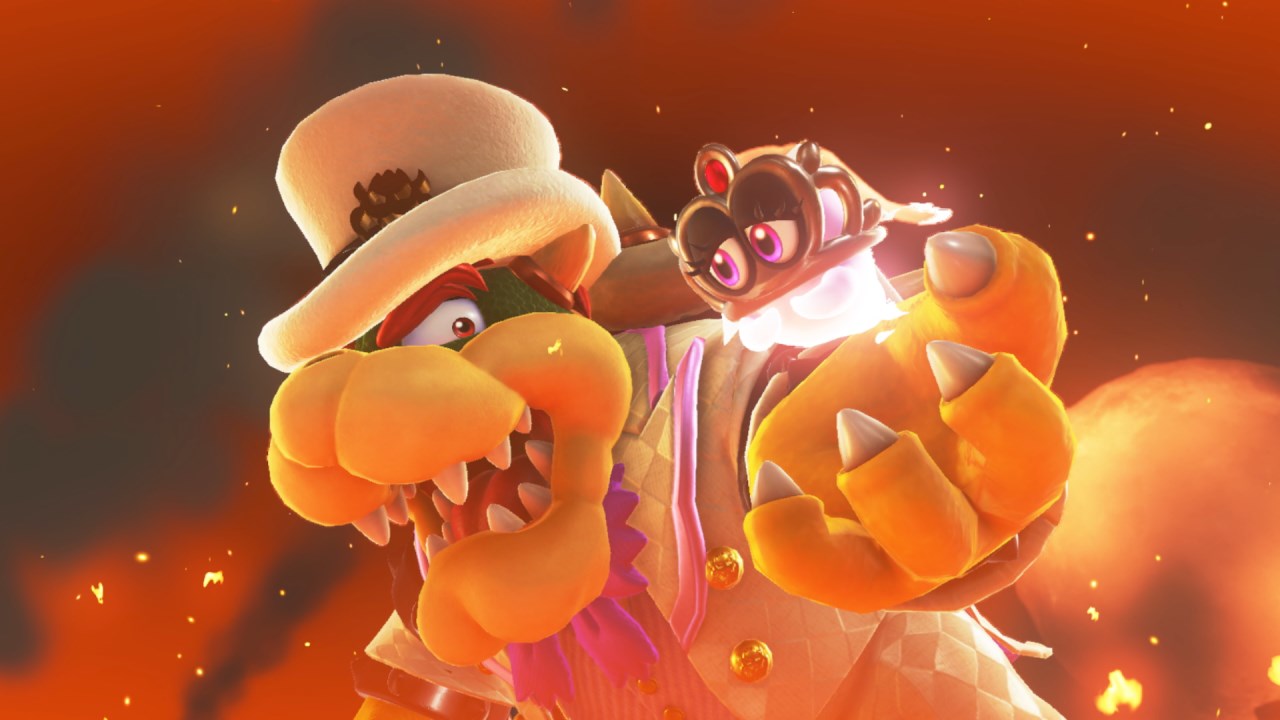
I’ve had a lot of fun with Super Mario Odyssey, despite the game not being groundbreaking in a notable way.
Odyssey offers an all-around solid throwback to an era when gaming was just beginning to figure out what polygons are and how to navigate three dimensional worlds.
Super Mario Odyssey’s release date is set for October 27th for the Nintendo Switch.
MobileSyrup may earn a commission from purchases made via our links, which helps fund the journalism we provide free on our website. These links do not influence our editorial content. Support us here.

